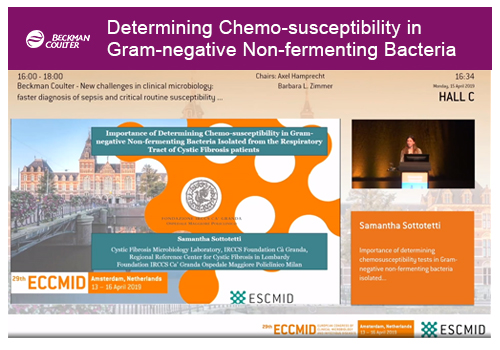Learn about the primary pathogens isolated in cystic fibrosis patients and consider these microorganisms' relative antimicrobial susceptibility. How do differing intrinsic resistance values from international authorities impact antibiotic management? What interpretive category breakpoints can be used with these opportunistic, environmental pathogenic, non-fermenting, Gram-negative bacteria in cystic fibrosis patients?
In this workshop, recorded at the 29th European Congress of Clinical Microbiology & Infectious Diseases, Dr. Samantha Sottotetti explains the importance of cystic fibrosis microbiology in Gram-negative, non-fermenting bacteria isolated from the respiratory tract of cystic fibrosis patients.
After viewing this webinar, you will be able to:
- Understand what bacteria colonize lungs of cystic fibrosis patients, and how MIC testing is performed
- Identify characteristics of colonization and phenotypes of P. aeruginosa, the major Gram-negative organism
- Describe other opportunistic pathogens—including A. xylosidans, S. maltophilia and B. cepacia—and antibiotic resistance for each organism
Ideal For: Microbiologist, Laboratory Director, Physician, Pathologist
Presenter: Professor Dr. Samantha Sottotetti, Cystic Fibrosis Microbiology Laboratory
Dr. Sottotetti is part of the Laboratory of Cystic Fibrosis Microbiology at the IRCCS CA' Granda Foundation Opsedale Maggiore Policlinico, of Milan, Italy. Her main research interests include molecular identification of clinical isolates of Burkholderia cepacia complex, and Mycobacterium abscessus complex. She also studies the molecular characterization of multidrug-resistant bacteria, particularly those involved in cystic fibrosis microbiology.
 English
English


